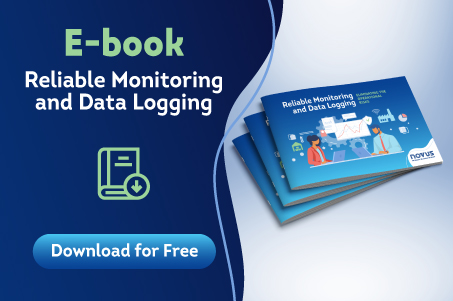Interaction between R&D and the factory
The development of an electronic product has a unique ritual and several parts to consider. First, there is the hardware to be used. This includes all the circuitry and components and the housing where that hardware will be, which will define the layout of the product. Last but not least is the embedded software in the hardware microcontroller, which will give it the “intelligence”. It will ensure the certifications the product must have and the software and/or applications the product must be compatible with.
Another part involves planning the tests that the product will have to pass (here we explain how our products are tested).
There is also one more important factor when developing a product: The production process. The technique of thinking about the production process during product development has a name: “design for manufacturing” (DFM).
At NOVUS, this concern was acquired through hard lessons. Over the years, it was built with many conversations, until all sectors involved were engaged. In the past, the R&D team that designed the product, either by obliviousness or because they thought they had it all figured out, did not anticipate some production problems until they occurred.
As obvious as it may seem today, they often failed to do the basics. That is, asking what difficulties the team responsible for manufacturing and assembly (the people who are directly involved in the process) foresaw when assembling and testing a new product.
How production affects product development
This interaction between the R&D and Industrial sectors has improved over time. It did not start out perfect (and is not perfect to this day. It is a constant evolution). In the beginning, just as R&D failed to ask the factory managers for their opinion or consulted them too late, the manufacturing team was also unsure about how to give their opinion on a product that did not yet exist.
Sometimes they would give suggestions that would need to modify the product design. Other times, they failed to mention some things that were obvious to them but were not to the development team. As the process matured, the R&D sector began to learn more about the process of manufacturing and testing products in the factory. By being introduced to “the coolest new product in the company,” the industrial area team, in turn, learned about the main points to consider.
And, most importantly, the manufacturing team learned to pay attention when being introduced to a new product that was “almost exactly like that other one.” That’s because there is always a little detail that is not exactly the same and, if not evaluated in advance, will almost certainly bring problems later.
Today, R&D teams consult with the Industrial team at various stages. For example: During the development of a new product; when evaluating issues related to the layout of circuit boards, temperature profiles of new components to be soldered in furnaces, and fittings for new housings; when considering new features that have been planned for a product to speed up the testing and calibration processes on the assembly line.
In addition, the production of the pilot batch is one of the last steps when developing a new product. Its purpose is to test the production process, to check that everything is alright, and to adjust any details that are not according to plan. Only after this batch, which typically consists of a few units, does the production of larger batches to be marketed begin.
So, with all this advance preparation and constant conversations, it means that there are no more surprises in the pilot batch of products?
Of course not! A few days ago, we had problems with a new product that has very powerful magnets used to secure it to metal surfaces. During the production of the pilot batch, the produced units were attracted by the support bars located below the production line conveyor belt. Since the device was “stuck” at the same point on the conveyor belt, the problem blocked the assembly line from moving forward. The planning had to be reviewed.
However, although this kind of unexpected situation happens from time to time, establishing a culture that includes preparing ourselves for good productivity means that most potential failures are detected and dealt with in time. After all, the sooner, the easier and cheaper the adjustment becomes.
This article was written by Sandro Santos, NOVUS’ Director of Research and Development

















